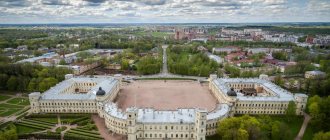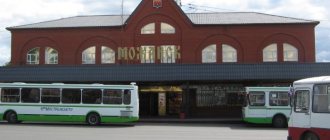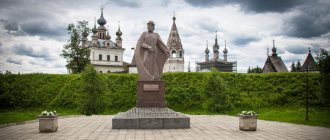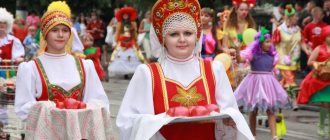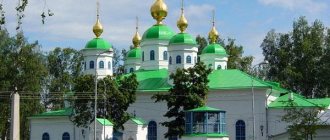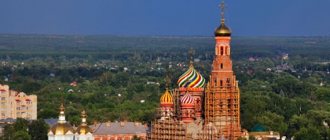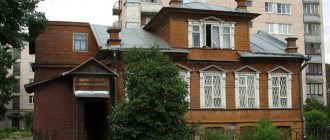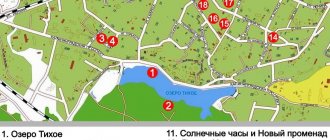Where is Gatchina
A small and cozy city, mentioned in 1500 in Novgorod documents as the village of Khotchino, changed its state affiliation, owners and name more than once during its existence.
Modern Gatchina is located in the southwest of the Leningrad region, not far from St. Petersburg. They are separated by a distance of 42 km, but are connected by a well-established transport network. To the city with coordinates 59°34′ N. w. 30°08′ E. You can get there from the northern capital by electric train, bus or car.
By rail
An electric train departs hourly from the Baltiysky railway station (Baltiyskaya metro station) towards Gatchina. If its final destination is the Gatchina-Baltiyskaya station, then you should get off there. Travel time is 1 hour 10 minutes, fare is 102 rubles.
Then walk to the Gatchina Palace and Park, the vast territory of which is surrounded by a forged fence and has several entrances. The nearest one is 500 m along Cuirassier Boulevard.
The stop of any transit train heading to Luga, Slantsy and so on will be called “Tatyanino”. In this case, you will have to walk along Sobornaya Street to the nearest entrance 1.5 km.
Gatchina, the sights of which you can start exploring on your own from Prioratsky Park, has on its territory another station, next after Tatyanino, Gatchina-Varshavskaya. From it to the entrance gate - 200 m along Chkalova Street.
By bus or minibus
Transport departs from the station. m. "Moskovskaya" St. Petersburg. Bus N 431 runs to Gatchina at intervals of 45-50 minutes. and minibuses NN K-18 and K-18a with breaks of 20 minutes. Travel time - 50 minutes, ticket price - 70-80 rubles.
Minibus K-18a goes all the way to the Gatchina Palace; K-18 and the bus will be taken to Sobornaya Street, which you will need to walk along; bus stop on the street Leonova will give you the opportunity to start the tour from the Priory Ensemble.
By car
St. Petersburg and Gatchina are connected by the Kiev Highway. The distance from the ring road to the city is only 30 km. Free parking is available next to the palace complex.
City population
The area of Gatchina is 28.7 km2. In terms of population, this city occupies a leading position in the Leningrad region. At the end of 2014, about one hundred thousand people lived here, and the population continues to grow. This population growth can, in particular, be explained by the fact that many residents of St. Petersburg prefer to purchase housing here. In Gatchina, the cost of apartments is significantly lower, so in the morning people leave for work in St. Petersburg, and in the evening they return to their convenient and comfortable apartments.
Weather, best time to visit
The climate in the region is temperate continental, its formation is influenced by the air masses of the Atlantic Ocean and the Baltic Sea. Therefore, mild winters with thaws and warm, sometimes even cool summers are typical for Gatchina. The city is located in an area of high humidity, with annual precipitation exceeding 700 mm.
Daytime air temperature (0C), amount of precipitation (mm) and sunny days:
| Jan. | Feb. | March | Apr. | May | June | July | Aug. | Sep. | Oct. | Nov. | Dec. |
| -5,5 | -4 | 0 | +7,5 | +16 | +19 | +23 | +21 | +15 | +7 | +2 | -2,5 |
| 26 | 25 | 19 | 27 | 24 | 34 | 43 | 44 | 28 | 33 | 30 | 29 |
| 1 | 1 | 2 | 7 | 18 | 15 | 15 | 19 | 10 | 6 | 3 | 1 |
The tourist season in Gatchina lasts all year round, but the most comfortable time to visit the city is from May to September.
Religious buildings
Today more than 90 thousand people live in Gatchina. In terms of national composition, the majority are Russian; in terms of religion, Orthodoxy predominates.
Church of the Most Holy Life-Giving Trinity
The house church of the Gatchina Palace was built under Count Orlov simultaneously with the main building (second half of the 18th century) and by the same architect (Antonio Rinaldi). After the death of the count, the palace belonged in turn to the ruling members of the royal family or the great princes, and the temple was used by them for its intended purpose: prayer services were held here, sacraments were performed, and shrines were kept.
The house church was rebuilt many times. The last time the court architect R.I. was involved in designing its interior was in the mid-19th century. Kuzmin, on the instructions of Nicholas I. He decorated the prayer hall in the style of the Italian Renaissance: windows with arched ends, columns, openwork grilles.
After the revolutionary events, the church was closed, remained in disrepair and was revived again in 1999. The uniqueness of the temple is that, having survived difficult times, it did not perish. Restorers managed to restore the original decor of the mid-19th century.
The oldest temple in the city is a functioning Orthodox Church (services are held on Saturdays) and a valuable architectural monument. It is located at: Krasnoarmeysky Prospekt, 1.
Cathedral of St. Paul the Apostle
The main city cathedral, built in the 19th century according to the design of the architect R.I. Kuzmin, is located at Sobornaya Street, 26. The city needed a cathedral.
The installation location on a hill was determined by the emperor himself; the temple was supposed to float above the city. Nicholas I erected the five-domed cathedral in memory of his father; experiencing remorse over the death of his parent, the tsar ordered the building to be decorated in severity and grandeur, without excessive luxury and gilding.
Pavlovsk Cathedral was closed only once for a short period of time, just before the war; the rest of the time it performed all religious rites and received believers even during the occupation.
True, its strategic position was used by both armies to adjust fire, conduct observations and install machine gun crews. After the war, the building was restored, and the city’s temple has continued its activities for more than 165 years.
Intercession Cathedral
The largest temple in the Leningrad region, consecrated in honor of the Mother of God, was built at the beginning of the 20th century. It is located at: st. Krasnaya, 1a and is a cultural monument.
A beautiful white stone building with blue domes can be seen from afar; it is stately and elegant. The interior is bright, filled with glare from the stained glass windows. The cathedral is open daily, services are held as scheduled, and visitors are allowed to take photos and videos.
Gatchina Palace
On Krasnoarmeysky Prospekt is the main attraction of the city of Gatchina, Leningrad Region - the Imperial Palace.
In 1765, Catherine II donated the lands of Gatchina to her close general-feldzeichmeister (the rank of chief artillery chief) Count Grigory Orlov in gratitude for his faithful service. A year later, construction of the complex began on the shore of the lake. Several dozen faceted towers and a unique 120-meter-long underground tunnel to the Silver Lake gave the palace the appearance of an English castle from the Middle Ages. After Orlov's death, in 1883, the complex became the residence of Emperor Paul I.
On his instructions, the Italian architect Vincenzo Brenna is rebuilding the building. In front of the palace, according to the Italian's plan, a canal is dug through which four bridges with cast-iron gratings are erected.
In 1845, the building was rebuilt again under Emperor Nicholas I.
An imperial church was built. At the same time, a new grand staircase was erected in the main central building for noble guests and members of the imperial family. Under Alexander III, the palace complex was electrified and telephone communications were installed.
Since 1918, the Gatchina Palace has been converted into a museum. It contained exhibits of palace decoration and life of the 19th century. During the Second World War the palace was partially destroyed.
Since 1950, the palace building has housed the Naval School, and after some time - the Electronstandart Research Institute.
Since 1960, restoration work began to restore the former interior of the premises. They continued for 15 years. Now tourists can see the completely restored marble dining room, the ceremonial bedchambers of the monarch and his family members, the underground tunnel and many other rooms of the imperial palace.
The most interesting museums
The city has museums that may be of interest to lovers of history, technology, and art.
Museum-Estate of P. E. Shcherbov
One of the oldest museums in the region was opened in 1967. Previously it was located in the Priory Palace, and in 1992 it moved to the restored estate of the cartoonist P.E. Shcherbov, famous at the beginning of the 20th century. It receives 14 thousand visitors a year and has a collection of 16 thousand items.
The museum's exposition is currently displayed on 2 floors, on an area of 200 sq. m:
- 1st floor – a collection telling about the life and work of the former owner of the estate and his friends;
- 2nd floor - the history of Gatchina, the development of aviation and the war years.
The artist’s house is also a museum exhibit, differs from the buildings of St. Petersburg in the Art Nouveau style, and stands out for the boldness of the techniques used by the architect.
The museum is open daily from 10 to 17. Closed on Monday. The cost of an adult ticket is 100 rubles. There are benefits.
Don't miss the most popular article in the section: The best ski resorts in Azerbaijan.
Museum of the City of Gatchina
In 2009, the city museum, created on the initiative of veterans, opened its doors at the address: 25 Oktyabrya Ave., 18. The permanent exhibition tells about the life of the region in pre-Petrine times, about the development of Gatchina during the reign of Paul I, and about the events of subsequent centuries.
There are excursions on the works of local artists, scientific inventions, and famous fellow countrymen of Gatchina. The museum owns 14 thousand storage units and conducts educational and scientific work.
Gatchina operating hours
Gatchina Park is beautiful because entry to it is free. You can walk here every day from 06.00 to 22.00. If you plan to visit the Gatchina or Priory palaces, then there is a separate schedule for them. Gatchina Palace (castle) is open daily, except Mondays, from 11.00 to 19.00 (the ticket office is open until 18.00); The Priory Palace is open every day, except Mondays and Tuesdays, from 11.00 to 19.00 (the ticket office is open until 18.00).
The entrance ticket to the Gatchina Palace (castle) is 450 rubles, to the Priory Palace - 200 rubles. You can buy a single ticket for 600 rubles. Also in the summer, organized outdoor excursions are held in the park; the cost of such excursions is 350 rubles per person. Tours are conducted by session.
Ninara/Grand Gatchina Palace, apartments
Monuments and Monuments
Gatchina (you can see the sights on your own just by walking along the city streets) is decorated with both modern sculptures and works of famous masters of historical and artistic value.
Monument to Paul I
The work of the famous court sculptor I.P. Vitali is installed on the square in front of the Gatchina Palace. The founder of the city stands on a high granite pedestal, leaning on a cane and looking complacently into the distance.
To recreate the image of the emperor, the sculptor turned to a lifetime painting painted in 1796 by the court artist Shchukin. The order for the monument was made by Nicholas I in memory of his father. It was installed in Gatchina in 1851.
A second similar monument stands in Pavlovsk, where the emperor, standing on a granite pedestal, receives his guests arriving along Lipovaya Alley.
Monument to the defenders and liberators of Gatchina
The city, which was under occupation during the war, gratefully remembers the feat of the heroic defenders and liberators of Gatchina who laid down their lives here. The monument was opened in 1995 in Revolutionary Lane. The authors of the granite monument are V.V. and Yu.F. Shevchenko.
The image of a soldier in a helmet, with a weapon in his hands, is drawn from a block of stone. At its foot was laid a capsule with a message to descendants, which should be opened in 2045.
Monument to the Farman aircraft
The first Russian military airfield appeared in Gatchina in 1910. 100 years later, in the city, on Cuirassier Boulevard, next to the aircraft engine plant, a monument to the Farman aircraft, which was once based at the local airfield, was erected.
At the beginning of the 20th century, aviation was considered the sport of aristocrats; The airport, which appeared in an aristocratic suburb of the capital, owned 10 aircraft, workshops, a gas storage facility and a weather station. The first flight “St. Petersburg – Gatchina” was carried out on a Farman aircraft.
Architectural structures
The city has preserved buildings that are classified as architectural monuments and specially protected objects. But the royal residences are of greatest interest to tourists: the Gatchina and Priory palaces.
Gatchina Palace
Gatchina begins for tourists who come to explore the city on their own or as part of an excursion group, with the main attraction - the Gatchina palace complex. Its emergence is associated with the reign of the Great Empress Catherine, who gifted her favorite with land.
Count Orlov launched serious construction, and 15 years later, upon completion of large-scale work, in 1781 a rare beautiful palace by the Italian architect Antonio Rinaldi and a unique landscape park, masterfully integrated into the natural terrain with spring lakes, rivers and canals, appeared here.
The Gatchina Palace is the main attraction, which will take a whole day to explore on your own.
The central location is occupied by a three-story building, topped by high towers and connected to lower wings by arched wings. The outbuildings were used as service premises and had courtyards for convenience.
The interiors of the palace, as described by contemporaries, were magnificent. But Count Orlov did not own this treasure for long; after his death, Catherine the Great bought the palace. The building was slightly altered, and from 1783 it became the royal residence in Gatchina.
In 1796, Paul I became the emperor of the country, who practically moved to Gatchina, turning the palace into a fortress with bastions, a moat, and powerful guards. The years of his reign saw the powerful development of the city: the nobility, trying to be closer to the king, built houses, institutions, entertainment and other establishments here.
After the assassination of Paul I, subsequent rulers, maintaining the palace in proper condition, came to the city infrequently.
After 1917, a museum was opened in the Gatchina Palace to familiarize people with the life of the kings. Large-scale reconstruction of the building began in 1976 and is still underway. The museum does not stop its work for a single day, immediately opening the doors to the restored premises.
Today visitors can see:
- on the ground floor there are rooms of Paul I with personal belongings, his portraits by famous artists, a collection of paintings;
- on the second floor there is a suite of magnificent halls, including the dining room, the boudoir of Empress Maria Feodorovna, and the ceremonial bedchamber, as well as a collection of weapons of Russian emperors;
- third floor - an exhibition about the history of the palace museum, an art gallery and a functioning house church.
In addition, the palace is open after reconstruction:
- underground passage built under Count Orlov;
- signal tower (one of two towering above the central building), on which there is an observation deck;
- Arsenal Hall
The museum is open from 11 a.m. to 7 p.m., seven days a week. The cost of an adult ticket is 400 rubles, for children and pensioners – 200 rubles.
Priory Palace
The building, built in 1799 on the instructions of Paul I, was donated by him to the Order of St. John of Jerusalem. But it was never used for its intended purpose, remaining a spare palace.
The Priory Palace is considered a symbol of Gatchina; it is easily recognizable due to its unusual architecture. Built near the Black Lake, it looks like a fortress in the Gothic style.
The author of the palace is architect N.A. Lvov, which used an innovation during construction: the material was ordinary earth, manually compressed in special formwork.
The second name of the castle is “earthen”. The author erected the structure as “temporary”, giving it a period of no more than 50 years. The palace still stands, more than 200 years old, and is a decoration of the city and a museum with an exhibition about its history. The museum is open in summer from 11 to 19, in winter from 10 to 18. Ticket price – 200 rubles, discount – 100 rubles.
Map
| Gatchina: maps |
Gatchina: photo from space (Google Maps) Gatchina: photo from space (Microsoft Virtual Earth)
| Gatchina. Nearest cities. Distances in km. on the map (in brackets along roads) + direction. Using the hyperlink in the distance , you can get the route (information courtesy of the AutoTransInfo website) | |||
| 1 | New World | 3 () | IN |
| 2 | Thais | 11 () | WITH |
| 3 | Villosi | 14 () | WITH |
| 4 | Kommunard | 16 (41) | IN |
| 5 | Russian-Vysotskoye | 18 () | NW |
| 6 | Vyritsa | 21 (31) | SE |
| 7 | Fornosovo | 23 () | IN |
| 8 | Siversky | 24 (27) | YU |
| 9 | Housewarming | 27 () | WITH |
| 10 | Hunchbacks | 29 () | WITH |
| 11 | Friendly Gorka | 31 () | IN |
| 12 | Telman | 31 () | NE |
| 13 | Krasny Bor | 33 () | IN |
| 14 | Ulyanovka | 36 (52) | IN |
| 15 | Volosovo | 38 (43) | Z |
| 16 | Nikolskoye | 39 (63) | IN |
| 17 | them. Sverdlova | 39 (73) | NE |
| 18 | Kudrovo | 42 () | NE |
| 19 | Saint Petersburg | 43 (53) | WITH |
| 20 | Tosno | 43 (60) | IN |
| 21 | Otradnoe | 45 (59) | NE |
| 22 | Old | 48 () | NE |
| 23 | Yanino-1 | 48 () | NE |
| 24 | Dubrovka | 54 (83) | NE |
| 25 | Murino | 55 (72) | WITH |
| 26 | Mga | 55 (74) | IN |
| 27 | Mounds | 57 () | WITH |
| 28 | Vsevolozhsk | 57 (73) | NE |
| 29 | New Devyatkino | 58 () | WITH |
| 30 | Kirovsk | 58 (78) | NE |
a brief description of
The city of Gatchina is located on the Izhora Upland, in the upper reaches of the river. Izhora, 46 km southwest of St. Petersburg. It lies on the highway St. Petersburg - Pskov.
Railway junction lines; Gatchina-Warshavskaya: Tallinn - Tosno, St. Petersburg - Pskov.
In 1970, Gatchina was included in the list of historical cities of Russia. The urban planning value of its heritage is assessed at the national level. In 2010 it was excluded from the list of historical cities.
Gatchina and its surroundings are a popular destination for tourism and recreation.
Territory (sq. km): 29
Information about the city of Gatchina on the Russian Wikipedia site
Historical sketch
It was first mentioned in a census book in 1499 under the name Khotchino as a possession of Novgorod. The name is from an anthroponym with the base hot: Hot, Hoten, Hotsha, Hotya, etc., derived from Khotobuzh, Hoti Mir, etc. A Slavic rethinking of the original ancient Finnish name hatsha “burning” is allowed; an area where the forest was burned for arable land.”
According to the Stolbovo Peace Treaty of 1617, Khotchino ended up in Sweden.
In 1703 it was returned to Russia, the name is already used in the form of Gatchino. In the 1720s. Gatchina (Gatchina Manor) belonged to the sister of Peter I, Princess Natalya Alekseevna, then to the court physician I.P. Blumentrost, princes Kurakin, since 1765 - the possession of Count G.G. Orlova.
In 1783, Gatchina was purchased by Catherine II and presented to the future Emperor Paul I. Since 1796, the city has been a city in the St. Petersburg province.
During the reign of Paul I - one of his main residences.
In 1801-28, Gatchina belonged to the Dowager Empress Maria Feodorovna, then to Nicholas I and his heirs.
In 1853, the Warsaw Railway line passed through Gatchina.
In 1856, in the provincial town of Gatchina, Tsarskoye Selo district, St. Petersburg province, there were 7 churches, 351 houses, 45 shops. In the materials of the population census of 1897 it was mentioned as the city of Gatchina without a district.
In 1910, the first aeronautical (later aviation) school in Russia was opened in Gatchina, and an airfield was built.
In 1923, the city of Gatchino (check, perhaps Gatchina) was renamed Trotsk in honor of L.D. Trotsky (1879-1940), one of the most famous figures of the Bolshevik Party. After he was deported abroad in 1929, the city was renamed Krasnogvardeysk. On January 23, 1944, the original name was returned to the still occupied city, but in the form of Gatchina.
During the Great Patriotic War of 1941-45, the city was occupied by Nazi troops on September 13, 1941. It was liberated on January 26, 1944 by troops of the Leningrad Front and the Baltic Fleet during the Krasnoselsko-Ropshin operation.
Economy
Factories: mechanical, for the production of equipment for the pulp and paper industry. Furniture factory, other enterprises.
Main enterprises
MECHANICAL ENGINEERING AND METAL WORKING
JSC "Skvoritsy Poultry Farm"
188352, Leningrad region, Gatchina district, Pudost
Offers:
poultry meat, poultry meat products
Culture, science, education
St. Petersburg Institute of Nuclear Physics.
Museum of Local Lore (founded in 1967 in the Priory Palace).
The work of many representatives of Russian culture is associated with Gatchina: A.I. Kuprina, M.A. Balakireva, S.M. Lyapunova, M.M. Ippolitov-Ivanov (a native of Gatchina), artist S.F. Shchedrina, F.A. Vasilyeva et al.
Universities of the city
Gatchina branch of the St. Petersburg State University of Technology and Design
188300, Leningrad region, Gatchina district, Gatchina, st. Karla Marksa, 17
Leningrad Regional Institute of Economics and Finance
188300, Leningrad region, Gatchina district, Gatchina, Roshchinskaya st., 5 WWW: https://www.loief.ru/
St. Petersburg Institute of Foreign Economic Relations, Economics and Law (Gatchina Branch)
188300, Leningrad region, Gatchina district, Gatchina, Revolutionary lane, 1
Architecture, sights
The historical core of Gatchina is the palace and park ensemble, formed in the 1760s. in a picturesque hilly area around a chain of lakes - White, Black, Serebryany, etc. In 1766-81 arch. A. Rinaldi built the main building of the ensemble to the west of Silver Lake and Karpin Pond - a 3-story rectangular palace in the style of early classicism with 2 faceted towers at the corners of the park facade and 2 side buildings connected to the palace by semi-circular galleries. The reconstruction of the palace for Paul I (the addition of side buildings, the laying of a through gallery on the 1st floor, etc.; architect V.F. Brenna) gave it a more severe, serf-like appearance. The meadow in front of the palace was turned into a parade ground with stone bastions and a drawbridge.
Picturesque landscape parks Dvortsovy (to the east of the palace and White Lake), Prioratsky (in the southern part with the unique earthen Priory Palace on the shores of the Black Lake, 1798-99, architect N.A. Lvov, erected on the occasion of the establishment of the Grand Priory of Malta in Russia Order), “Menagerie” (in the northern part of the ensemble), “Sylvia” (north of the palace).
The total area of the park is 617 hectares. Numerous bridges (including Kamenny, Lion), terraces, pavilions (Orla, Venus, Farm, Poultry House, etc.), gates (Beryozovye, Admiraleisky), which were built in the late 18th - early 19th centuries. according to the designs of architects V.F. Brenna, A.D. Zakharova and others are among the best examples of landscape architecture in Russia.
In 1918, the ensemble was given the status of a palace museum.
During the Great Patriotic War, the city was occupied by Nazi troops on September 13, 1941; liberated on January 26, 1944. During the occupation, palaces and parks were destroyed. Immediately after the war, their restoration began. Since 1977, the palace premises have been restored.
The city of Gatchina itself developed mainly to the west of the palace and park ensemble in the late 18th - first half of the 19th centuries, when individual palace villages (Ingenburg, Gatchina Posad, Bombardirskaya Sloboda) merged into a single, regularly planned urban complex. The village of Marienburg (in the northwestern part of the city) turned out to be geographically isolated.
The residential areas of Gatchina had an orthogonal layout, in front of the most significant public buildings (Cloth factory, later - the palace administration building, 1794-95, possibly by architect N.A. Lvov; hospital, 1793-94, possibly by architect A.N. Voronikhin; Nikolaevskaya Church, 1825-28, architect D.I. Quadri, A.M. Baykov) city squares were built. The urban basis of this part of the city was the Bolshoi Avenue, opening from the side of St. Petersburg with the Ingenburg Gate (1831-32, architect V.A. Glinka) and ending at the border of the palace complex with the ensemble of Connentable Square with an obelisk in the center (1792-93, master K Plastinin; height 32 m; in the 18th-19th centuries served as the “hand” of a sundial).
Numerous classicist residential buildings of the 19th century, built according to “exemplary designs,” have been preserved in the city’s buildings. Areas of modern residential construction - so-called. Khokhlovo field near the “Menagerie” and the territory of the Gatchina airfield.
In the vicinity of Gatchina there are many manor complexes of the 18th and 19th centuries. To the south of the city, in the village of Suida, a park with ponds and the manor house of the A.P. manor have been preserved. Hannibal, great-grandfather of A.S. Pushkin. 10 km north of Gatchina, in the village of Taitsy, there is the ensemble of the estate of A.G. Demidov: a palace (1744-78, architect I.E. Starov) with a belvedere in the style of early classicism and a landscape park with a “Gothic gate” (late 18th century).
12 km south of Gatchina, in the village of Nikolskoye - the ensemble of the estate of P.G. Demidov Sivoritsa: a palace in the style of early classicism with an original attic finish and 2 outbuildings forming the front courtyard (1775-76, architect I.E. Starov) and a landscape park with a loam gazebo on the hillside.
28 km south of Gatchina, in the village of Vyra (known since the 15th century) there is a complex of postal station buildings from the 19th century, the Museum “The Station Master's House”, dedicated to the hero of the story A.S. Pushkin's "Station Warden" to Samson Vyrin. In Vyra there is the former family estate of the writer V.V. Nabokov.
30 km south of Gatchina is the village of Rozhdestveno (known since 1499, in 1780-96 a district town) with the main wooden house of the former Efremov estate, decorated with Ionic porticoes and loggias (late 18th century), with the Ascension Church in the style of early classicism ( 1780s, architect F.I. Volkov), Church of the Nativity (1883).
18 km west of Gatchina, near the village of Elizavetino - the ensemble of the former estate of Dylitsa of Empress Elizaveta Petrovna with a small Hunting Palace in the Baroque style (mid-18th century; the decor of the facades was changed at the end of the 18th century) with a large floral parterre in front of the southern facade; Vladimir Church in Baroque style (1762-66).
| Population by year (thousands of inhabitants) | |||||||
| 1856 | 5.2 | 1976 | 73 | 2001 | 81.7 | 2014 | 95.9 |
| 1897 | 14.8 | 1979 | 75.2 | 2003 | 88.4 | 2015 | 96.3 |
| 1923 | 15.8 | 1982 | 77 | 2005 | 88.5 | 2016 | 95.6 |
| 1926 | 18.6 | 1986 | 80 | 2006 | 88.8 | 2017 | 95.2 |
| 1931 | 19.0 | 1989 | 79.7 | 2007 | 89.1 | 2018 | 94.4 |
| 1939 | 38.2 | 1992 | 80.9 | 2008 | 89.9 | 2019 | 93.7 |
| 1959 | 36.7 | 1996 | 81 | 2010 | 90.3 | 2020 | 91.7 |
| 1967 | 53 | 1997 | 81.8 | 2011 | 92.9 | 2021 | 89.3 |
| 1970 | 63.3 | 1998 | 81.4 | 2012 | 93.8 | ||
| 1973 | 68 | 2000 | 81.8 | 2013 | 95.1 | ||
Literature
- Krogius V.R.
Historical cities of Russia as a phenomenon of its cultural heritage. M.: Progress-Tradition, 2009. p. 262 - Pospelov E.M.
Geographical names of the world: Toponymic dictionary: About 5000 units. M.: Russian dictionaries, Astrel Publishing House LLC, AST Publishing House LLC, 2001. p. 112 - Ch.
ed. Gorkin A.P. Geography of Russia: encyclopedic dictionary. M.: Great Russian Encyclopedia, 1998. pp. 141-142 - Ch.
ed. Lappo G.M. Cities of Russia: encyclopedia. M.: Great Russian Encyclopedia, 1994. pp. 104-105
Natural attractions
Gatchina is located in a picturesque place among forests, fields, rivers and lakes. The city streets are decorated with parks and squares. But the small city has two luxurious palace parks on its territory.
Gatchina Park
Simultaneously with the construction of the Gatchina Palace, an English landscape park with alleys, pavilions, ponds and bridges was laid out. The masters, using the entire arsenal available to them, managed to create a magnificent European oasis in the northern region, which is still considered one of the best in the suburbs of St. Petersburg.
It is surprising that the park was carefully preserved after the revolution in Russia, and during the occupation of Gatchina by the Nazis, and during the years of perestroika.
Now, as in the palace, a successive large-scale restoration of its territory is underway; a lot has already been done, but there is still a lot of work ahead.
During the walk, visitors will see:
- monument to Paul I on the parade ground in front of the palace;
- Jordan Porch;
- Own garden;
- Palace Gardens;
- Karpin Bridge over the pond of the same name;
- Chesme obelisk;
- farm
- Pavilion of Venus and much, much more.
Visiting the park is free. Opening hours from 6 to 22 hours.
Priory Park
During the reign of Paul I, construction of another palace park began. Work began with the improvement of the Black Lake, on the shore of which the Priory Palace was built.
The lake was cleared, deepened, and given greater relief. The earth was dumped from the bottom nearby, creating hills and artificial islands. The landscape park was so good that subsequent rulers supported its “flourishing state” in every possible way, prohibiting any construction on its territory. The entrance here was open to citizens. Today the park is not a museum; cottages have begun to be built on its territory.
Terrace-pier
The Gatchina palace complex is located surrounded by a palace park, in which one of the main structures is the Big Terrace on the Long Island (the conventional name for a group of islands connected by bridges).
The court architect Vincenzo Brenna began its construction in 1772. The terrace was then used as a pier for the Gatchina flotilla. The structure was a multi-ton platform 52 meters long along the shore of Silver Lake. During the Second World War, the pier was heavily damaged.
The terrace railing, which was decorated with marble vases and sculptures of art goddesses, was destroyed.
Now, despite the absence of these decoration elements, the pier attracts tourists as a vacation spot on the territory of the Gatchina State Nature Reserve.
Interesting places to relax with children
A vacation program with a child in Gatchina will differ little from a visit to the city by adults.
First of all, these are palace and park ensembles. To interest a child, you need to prepare for the excursion and tell him the history of the Russian tsars in a language accessible to him. You can take a scooter or bicycle to the park, periodically arrange “breaks” with ice cream or have a thorough rest in a cafe.
The Gatchina Museum organizes a special excursion “Museum Chests” for children, but you need to check the time of the excursion.
The Gatchina Youth Theater has a good repertoire, its performances will also be interesting for adults. Schoolchildren should visit the Museum of Aviation Engine Engineering, where they will talk about the role of Gatchina in the development of domestic aviation.
Route to explore on your own
Gatchina (you can explore the sights on your own by making a pre-planned visit) offers tourists an extensive cultural program. An approximate route could be:
1 day:
- Visit to the Great Gatchina Palace.
- After lunch, a walk through Gatchina Park.
- In the evening you can go to the theater-studio “Around the Corner”.
Day 2:
- Visit to the Priory Palace and park.
- Intercession Cathedral.
- After lunch – the museum of the city of Gatchina.
Day 3:
- Museum-Estate of P. E. Shcherbov
- Cathedral of St. Pavel
- Walk around the city with inspection of the Ingerburg Gate, the Constable, and monuments.
Hotels
The city provides guests with the opportunity to choose a place to stay based on their tastes, desires and capabilities. In modern Gatchina there are hotels, private inns, and hostels.
Hotel Gatchina
The building is located on the street. Gorky, 21, not far from the Priory Palace. The hotel has a shared lounge, luggage storage, parking, free internet.
Rooms with a private bathroom are equipped with necessary furniture, household appliances and hygiene products. The price includes breakfast. Price – from 3300 rub.
Hotel Priorat
Hotel on the street Chkalova, 59a is located in the historical center of the city, 1 km from the Gatchina Palace. It offers 1-3 bed rooms with all amenities, air conditioning, refrigerators, cable TV. Near the hotel there are city attractions, cafes and shops. Cost – from 1600 rubles.
Hotel Aksioma
Visitors are offered rooms with all amenities, television, refrigerators. But those who wish can also stay in a capsule room with a shared bathroom and toilet. Cost – from 800 rub.
Where to eat
There are establishments in the city where it is convenient to relax and eat along the route, making this or that excursion.
Cafe "Pyramid" is located at: st. Sobornaya, 3. An old-timer of Gatchina catering is located on the way to the Priory complex. According to visitors' reviews, pizza and pasta are prepared well here. The average bill is 700 rubles.
Cafe "Ginger" offers dishes of European, Russian and Georgian cuisine. There is a children's menu, animator services, and play sets. Open from 10 a.m. to 11 p.m., on weekends until 2 a.m. Located on 25 Oktyabrya Avenue, 42. The average bill is 700-1500 rubles.
How to navigate
Public transport in Gatchina is represented by buses and minibuses, which follow 11 routes. From the city bus station, which is located at the Gatchina-Varshavskaya railway station, buses depart throughout the city and to suburban areas. Several small companies provide taxi services for passengers. Network mobile taxi calls work.
Gatchina is a city that is worthy of a visit to get acquainted with its unique sights. It’s not at all difficult to do this on your own, the historical center is small, and the tourist infrastructure is well developed.
Article design: Vladimir the Great
Aerodrome
This area of Gatchina is separated from the central part of the city by a railway track. It is located near the Baltic station of Gatchina. The name of this area was “inherited” from those distant times when the operating Aeroflot was located here. Among the main advantages of this area are the proximity of the station, public transport, including St. Petersburg routes.

